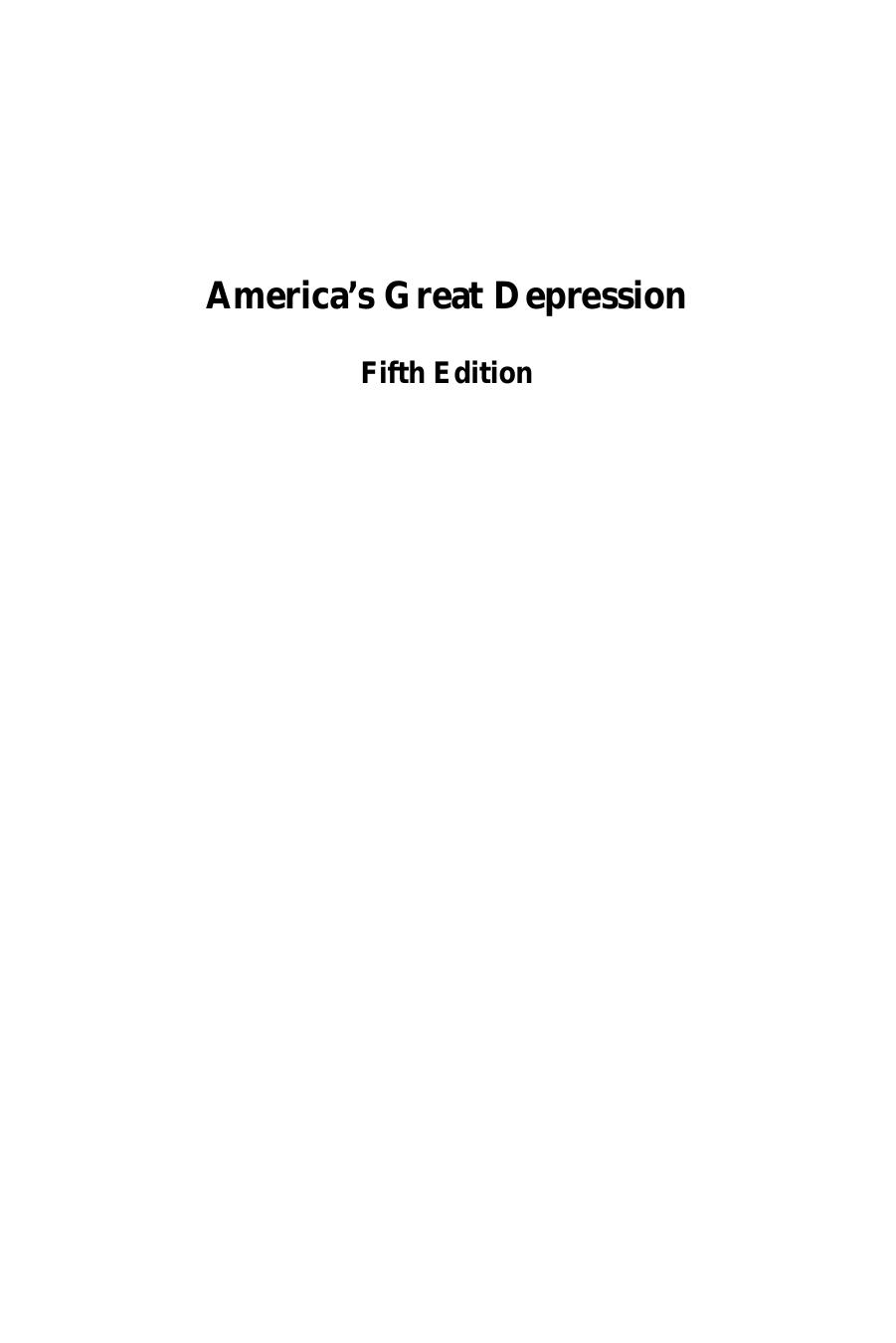America's Great Depression by Murray Newton Rothbard

Author:Murray Newton Rothbard
Format: mobi, epub, pdf
Tags: Depressions, Business cycles, 20th century, United States, United States - 20th Century, Business & Economics, Political Science, Economic policy, 1929, Public Policy, Economic History, Free Enterprise, Depression, History
ISBN: 9780945466055
Publisher: Ludwig von Mises Institute
Published: 2000-12-13T20:00:00+00:00
Part III
The Great Depression: 1929–1933
7
Prelude to Depression:
Mr. Hoover and Laissez-Faire
If government wishes to alleviate, rather than aggravate, a depression, its only valid course is laissez-faire—to leave the economy alone. Only if there is no interference, direct or threatened, with prices, wage rates, and business liquidation will the necessary adjustment proceed with smooth dispatch. Any propping up of shaky positions postpones liquidation and aggravates unsound conditions. Propping up wage rates creates mass unemployment, and bolstering prices perpetuates and creates unsold surpluses. Moreover, a drastic cut in the government budget—both in taxes and expenditures—will of itself speed adjustment by changing social choice toward more saving and investment relative to consumption. For government spending, whatever the label attached to it, is solely consumption; any cut in the budget therefore raises the investment–consumption ratio in the economy and allows more rapid validation of originally wasteful and loss-yielding projects. Hence, the proper injunction to government in a depression is cut the budget and leave the economy strictly alone. Currently fashionable economic thought considers such a dictum hopelessly outdated; instead, it has more substantial backing now in economic law than it did during the nineteenth century.
Laissez-faire was, roughly, the traditional policy in American depressions before 1929. The laissez-faire precedent was set in 185
186
America’s Great Depression
America’s first great depression, 1819, when the federal government’s only act was to ease terms of payment for its own land debtors. President Van Buren also set a staunch laissez-faire course, in the Panic of 1837. Subsequent federal governments followed a similar path, the chief sinners being state governments which periodically permitted insolvent banks to continue in operation without paying their obligations.1 In the 1920–1921 depression, government intervened to a greater extent, but wage rates were permitted to fall, and government expenditures and taxes were reduced. And this depression was over in one year—in what Dr. Benjamin M. Anderson has called “our last natural recovery to full employment.”
Laissez-faire, then, was the policy dictated both by sound theory and by historical precedent. But in 1929, the sound course was rudely brushed aside. Led by President Hoover, the government embarked on what Anderson has accurately called the “Hoover New Deal.” For if we define “New Deal” as an antidepression program marked by extensive governmental economic planning and intervention—including bolstering of wage rates and prices, expansion of credit, propping up of weak firms, and increased government spending (e.g., subsidies to unemployment and public works)—Herbert Clark Hoover must be considered the founder of the New Deal in America. Hoover, from the very start of the depression, set his course unerringly toward the violation of all the laissez-faire canons. As a consequence, he left office with the economy at the depths of an unprecedented depression, with no recovery in sight after three and a half years, and with unemployment at the terrible and unprecedented rate of 25 percent of the labor force.
Hoover’s role as founder of a revolutionary program of government planning to combat depression has been unjustly neglected by historians. Franklin D. Roosevelt, in large part, merely elaborated the policies laid down by his predecessor.
Download
America's Great Depression by Murray Newton Rothbard.epub
America's Great Depression by Murray Newton Rothbard.pdf
This site does not store any files on its server. We only index and link to content provided by other sites. Please contact the content providers to delete copyright contents if any and email us, we'll remove relevant links or contents immediately.
The Vikings: Conquering England, France, and Ireland by Wernick Robert(79935)
Ali Pasha, Lion of Ioannina by Eugenia Russell & Eugenia Russell(40158)
The Conquerors (The Winning of America Series Book 3) by Eckert Allan W(37149)
The Vikings: Discoverers of a New World by Wernick Robert(36923)
Cecilia; Or, Memoirs of an Heiress — Volume 1 by Fanny Burney(32437)
Cecilia; Or, Memoirs of an Heiress — Volume 2 by Fanny Burney(31873)
Cecilia; Or, Memoirs of an Heiress — Volume 3 by Fanny Burney(31857)
Empire of the Sikhs by Patwant Singh(22978)
The Secret History by Donna Tartt(18852)
Hans Sturm: A Soldier's Odyssey on the Eastern Front by Gordon Williamson(18486)
Cat's cradle by Kurt Vonnegut(15189)
Pimp by Iceberg Slim(14398)
Sapiens: A Brief History of Humankind by Yuval Noah Harari(14254)
Talking to Strangers by Malcolm Gladwell(13229)
Norse Mythology by Gaiman Neil(13211)
Leonardo da Vinci by Walter Isaacson(13189)
4 3 2 1: A Novel by Paul Auster(12289)
Underground: A Human History of the Worlds Beneath Our Feet by Will Hunt(12027)
The Radium Girls by Kate Moore(11930)
